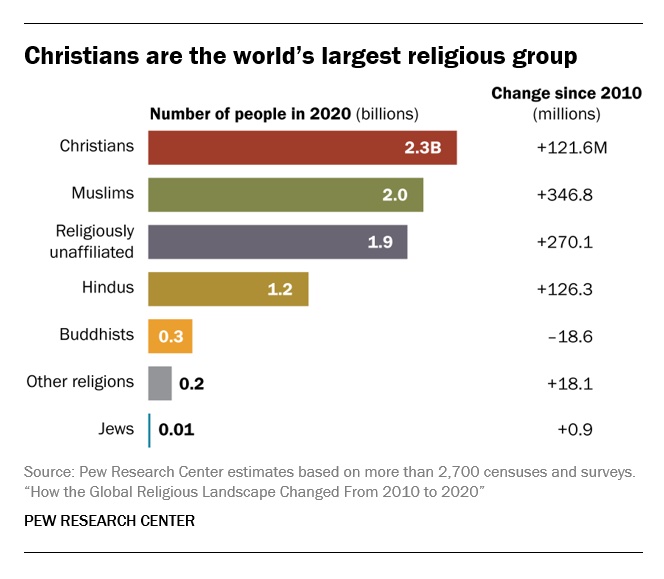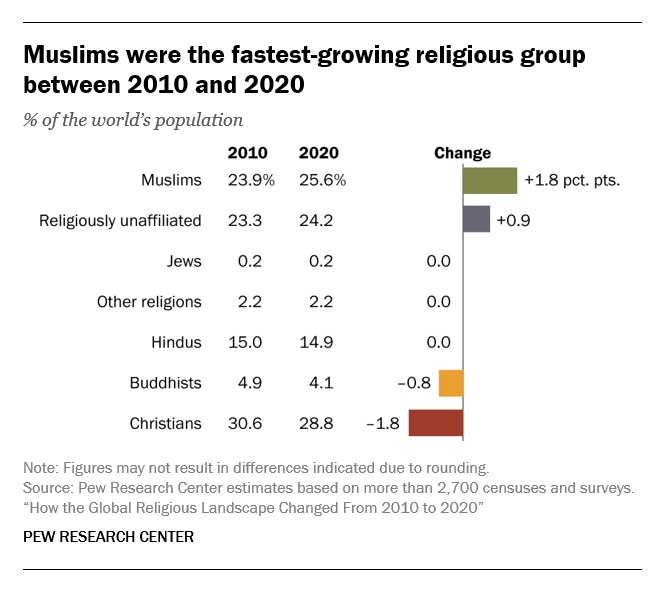Uncategorized
How one of North America’s largest Conservative congregations added 900 new members in 8 months
This article was produced as part of JTA’s Teen Journalism Fellowship, a program that works with Jewish teens around the world to report on issues that affect their lives.
TORONTO (JTA) — At a time of declining synagogue affiliation rates and following a pandemic slump, one of North America’s largest Conservative congregations gained 900 new members in just eight months.
Launched in July 2022, an initiative called the Generations Membership Program attracted young families to Beth Tzedec Congregation here by removing membership dues for anyone under the age of 40.
The success of the no-dues model surprised leaders of the synagogue, whose next challenge is to strengthen the connections between the new members and the congregation.
“We were all surprised by how much uptake there was,” said Yacov Fruchter, the synagogue’s director of Community Building and Spiritual Engagement, Yacov Fruchter.
With over 4,000 members, Beth Tzedec is one of the largest Conservative congregations in North America. However, over the past decade, Beth Tzedec has suffered from a decline that has affected the Conservative movement, once North American Judaism’s largest denomination. In 1971, 832 congregations identified with the movement, a number which dropped to 562 by 2020. The number of Conservative Jews also dropped from 1.6 million at its peak to a half million by 2020, according to data from the 2020 Pew Research Center survey of U.S. Jews.
The decline of the Conservative movement left Beth Tzedec struggling to attract new members while old families fell out of touch with the congregation. “Ten years ago, our membership was at 2,400 households, but I think that number was inflated,” said Rabbi Steven Wernick, its senior rabbi. “Into the pandemic, we saw membership drop to 1,700-1,800 paying units,” or families. That’s a decline of approximately 25% over the 2010s.
As director of education, Daniel Silverman oversees Beth Tzedec’s congregational school as well as bar/bat mitzvah educational programs. Silverman said that it was difficult to attract and maintain younger congregants due to shifting cultural perspectives and financial stresses that have worsened over recent years.
“It was hard to help people understand that synagogue was worth their time when we put up a relatively high [financial] barrier,” said Silverman. “People of this generation are not going to be inclined to join and pay money to join a synagogue in the way that their parents and grandparents were.”
Beth Tzedec’s membership dues are adjusted for each family unit depending on how much the family can pay. That doesn’t mean that membership is cheap, however. For the highest-earning members of the congregation, dues can be up to $6,000 annually per family.
Ariel Weinberg, 17, belongs to Beth Tzedec and participated in Silverman’s bat mitzvah educational program. When she becomes an adult, she said she would be happy to pay a portion of her salary for synagogue membership but wants her experience to be more than simply attending for the High Holidays.
“That’s a lot of money to put forth every month when I only use it twice per year,” Weinberg said.
Voluntary dues programs like Beth Tzedec’s have been growing in recent years. Synagogues adopting the model cite research showing that potential members see belonging to a synagogue as less of an obligation and instead want to be shown what a synagogue has to offer, as Rabbis Kerry Olitzky and Avi Olitzky argued in their 2015 book on membership models.
Wernick said that the way younger generations view synagogue membership is fundamentally different from previous generations.
“The traditional synagogue membership model was pay first and engage later. So what we decided to do was, engage first, and then we’ll talk about money later,” Wernick said.
Boosting membership on paper is one thing; creating active, engaged members who show up for worship and take part in programming is another. To demonstrate Beth Tzedec’s commitment to engaging the new cohort, the shul recently hired an engagement specialist and the board is also in the process of hiring a new cantor or rabbi. Leadership has also committed to meeting one-on-one for a “coffee date” with each new member of the congregation to strengthen new connections.
“The goal is to make a place as large as Beth Tzedec feel small and personal,” said Silverman.
Leadership’s attempts to better connect with congregants have already resonated well with new members. After Rebbecca Starkman and her family joined Beth Tzedec in September 2022, her husband met with Wernick as part of the “coffee date” initiative.
“He really, really enjoyed it,” said Starkman. “It also made him feel connected, connected and comfortable.”
When Wernick became Beth Tzedec’s chief rabbi in 2019, he set out to address Beth Tzedec’s membership woes. As the former CEO of the United Synagogue of Conservative Judaism, the congregational arm of Conservative Judaism, he used his expertise to devise a plan that would reverse the previous trend in Beth Tzedec’s affiliation.
“What I attempted to do at USCJ was to help synagogues reinvent themselves for the 21st century,” Wernick said.
Part of that idea, said Beth Tzedec’s president, Patti Rotman, meant rethinking the congregation’s membership model. “It couldn’t just be transactional. It had to be transformational,” Rotman said.
Prior to the implementation of the Generations program, Beth Tzedec had attempted strategies to improve engagement. Previously, membership for families under the age of 25 was set at only $50 per year. The congregation was able to support this program as membership dues only accounted for 30% of operating income, the rest coming from other sources.
According to Wernick, as of 2022, only 5% of Beth Tzedec’s operating income came from families under 40. As such, the switch to no-fee membership for the under-40 cohort did not cause a significant financial impact.
“So you already had a circumstance where those over 40 were already paying for those under 40,” Wernick said.
In the months prior to the implementation of the Generations Membership Program, Beth Tzedec undertook a significant amount of research into synagogue engagement in Toronto. Based on the 2018 Environics Survey of Jews in Canada, they learned that 70% of Jewish Canadians belonged to a congregation, more than double the percentage in the U.S.
“If there’s 200,000 Jews in the GTA [Greater Toronto Area], then 30% are not affiliated,” said Wernick, “and then if you break it down by how many people are in their 20s and 30s, we’re talking about 16,000 Jews.” Out of the 16,000, Wernick estimates that approximately 30% grew up as part of the Conservative movement, while 30% grew up unaffiliated.
Geographic research told Wernick that prior to July 2022, there were around 500 households in the vicinity of Beth Tzedec in need of a shul.
Rabbi Steven Wernick, senior rabbi of Beth Tzedec in Toronto, previously served as CEO of the United Synagogue of Conservative Judaism. (Courtesy of USCJ)
Beth Tzedec was able to focus its social media campaigns on neighborhoods with the greatest concentration of young and unaffiliated Jews in the vicinity.
“We targeted the unaffiliated, we targeted the previously affiliated to Beth Tzedec, but who had dropped off for more than three years, and we targeted based on geography,” as well as the study by Environics and information from UJA-Federation of Greater Toronto.
Even with the sophisticated marketing campaign, Wernick said that the synagogue expected it would only gain around 20-50 new households per year.
“Just because you give it away for free doesn’t mean that people are going to come,” said Wernick.
By the end of the first day of advertising, 50 new families had signed up.
“We are well over 420 new households,” Wernick said. Seventy-five percent of the uptake are brand-new members while the remainder are former Beth Tzedec members who had fallen out of the fold for more than three years.
The 420 household figure represents mainly families, as well as couples and individuals. Beth Tzedec President, Patti Rotman, estimates that approximately 900 new individual members became part of the synagogue in the eight months since the program was inaugurated.
When it comes to reinvigorating community life, gaining new members is not the only task at hand.
The membership drive “is only mile one of a marathon,” said Silverman.
“The most difficult part is, how do you then keep people connected?” said Fruchter. “You have to have the capacity to develop the relationships that you are starting.”
As self-identified Modern Orthodox Jews, Rebecca Starkman and her family attend synagogue regularly. Because her primary congregation only meets every other week, Starkman had been attending Beth Tzedec for years prior to joining under the Generations program.
“I had been attending loosely since since 2015,” said Starkman. “We had always been members at this other congregation but had not joined Beth Tzedec until this past September.”
Starkman said that it was the financial barrier that had been preventing her and her family from officially joining Beth Tzedec.
“We didn’t feel like we had enough finances to pay membership at two organizations,” said Starkman. “The program definitely gave us the motivation to make the leap to being part of the shul.”
Starkman said that she knows of other families who were also in her situation, attending Beth Tzedec services without becoming official members due to the financial barrier.
“There are three other families who did the same thing we did,” said Starkman. However, one family was over 40 and still could not join the congregation under the program. Nonetheless, for families who are lucky enough to be covered, Starkman said that the program is definitely a motivating factor to join Beth Tzedec.
Weinberg said that the Generations program will also improve diversity within the congregation.
“Our mandate really is to build a stronger Jewish future with youth and young professional engagement as our priority. And to go with that,” said Rotman, “we are also at the forefront of equity and inclusion.”
According to Rotman, Beth Tzedec maintains a vigorous diversity and inclusion committee dedicated to ensuring that the synagogue is an inclusive environment for everyone.
Given the local renaissance that Beth Tzedec has undergone, Rotman stresses the importance of bringing down barriers as the best way for synagogues to engage the current generation of Jews.
“Our goal is to inspire and enable Jews to live meaningful Jewish lives and the best way [to do so] for the under-40 cohort is to remove the barrier to membership,” Rotman said.
—
The post How one of North America’s largest Conservative congregations added 900 new members in 8 months appeared first on Jewish Telegraphic Agency.
Uncategorized
How the Global Religious Landscape Changed from 2010 to 2020

Muslims grew fastest; Christians lagged behind global population increase
• Christians are the world’s largest religious group, at 28.8% of the global population. They are a majority everywhere except the Asia-Pacific and Middle East-North Africa regions. Sub-Saharan Africa has surpassed Europe in having the largest number of Christians. But Christians are shrinking as a share of the global population, as millions of Christians “switch” out of religion to become religiously unaffiliated.

• Muslims are the world’s second-largest religious group (25.6% of the world’s population) and the fastest-growing major religion, largely due to Muslims’ relatively young age structure and high fertility rate. They make up the vast majority of the population in the Middle East-North Africa region. In all other regions, Muslims are a religious minority, including in the Asia-Pacific region (which is home to the greatest number of Muslims).

• The religiously unaffiliated population is the world’s third-largest religious category (24.2% of the global population), after Christians and Muslims. Between 2010 and 2020, religiously unaffiliated people grew more than any group except Muslims, despite their demographic disadvantages of an older age structure and relatively low fertility. The unaffiliated made up a majority of the population in 10 countries and territories in 2020, up from seven a decade earlier.
• Hindus are the fourth-largest religious category (14.9% of the world’s population), after Christians, Muslims and religiously unaffiliated people. Most (99%) live in the Asia-Pacific region; 95% of all Hindus live in India alone. Between 2010 and 2020, Hindus remained a stable share of the world’s population because their fertility resembles the global average, and surveys indicate that switching out of or into Hinduism is rare.
• Buddhists (4.1% of the world’s population) are the only group in this report whose number declined worldwide between 2010 and 2020. This was due both to religious disaffiliation among Buddhists in East Asia and to a relatively low birth rate among Buddhists, who tend to live in countries with older populations. Most of the world’s Buddhists (98%) reside in the Asia-Pacific region, the birthplace of Buddhism.
• Jews, the smallest religious group analyzed separately in this report (0.2% of the world’s population), lagged behind global population growth between 2010 and 2020 – despite having fertility rates on par with the global average – due to their older age structure. Most Jews live either in North America (primarily in the United States) or in the Middle East-North Africa region (almost exclusively in Israel).
These are among the key findings of a Pew Research Center analysis of more than 2,700 censuses and surveys, including census data releases that were delayed due to the coronavirus pandemic. This report is part of the Pew-Templeton Global Religious Futures project, which analyzes global religious change and its impact on societies around the world. Funding for the Global Religious Futures project comes from The Pew Charitable Trusts and the John Templeton Foundation.
Uncategorized
Antisemitism in some unlikely places in America

By HENRY SREBRNIK Antisemitism flourishes in a place where few might expect to confront it – medical schools and among doctors. It affects Jews, I think, more emotionally than Judeophobia in other fields.
Medicine has long been a Jewish profession with a history going back centuries. We all know the jokes about “my son – now also my daughter – the doctor.” Physicians take the Hippocratic Oath to heal the sick, regardless of their ethnicity or religion. When we are ill doctors often become the people who save us from debilitating illness and even death. So this is all the more shocking.
Yes, in earlier periods there were medical schools with quotas and hospitals who refused or limited the number of Jews they allowed to be affiliated with them. It’s why we built Jewish hospitals and practices. And of course, we all shudder at the history of Nazi doctors and euthanasia in Germany and in the concentration camps of Europe. But all this – so we thought – was a thing of a dark past. Yet now it has made a comeback, along with many other horrors we assume might never reappear.
Since the Hamas attack on Israel on October 7, 2023, there has been a resurgence of antisemitism, also noticeable in the world of healthcare. This is not just a Canadian issue. Two articles on the Jewish website Tablet, published Nov. 21, 2023, and May 18, 2025, spoke to this problem in American medicine as well, referencing a study by Ian Kingsbury and Jay P. Greene of Do No Harm, a health care advocacy group, based on data amassed by the organization Stop Antisemitism. They identified a wave of open Jew-hatred by medical professionals, medical schools, and professional associations, often driven by foreign-trained doctors importing the Jew-hatred of their native countries, suggesting “that a field entrusted with healing is becoming a licensed purveyor of hatred.”
Activists from Doctors Against Genocide, American Palestinian Women’s Association, and CODEPINK held a demonstration calling for an immediate cease-fire in Gaza at the Hart Senate Office Building in Washington, D.C., Nov. 16, 2023, almost as soon as the war began. A doctor in Tampa took to social media to post a Palestinian flag with the caption “about time!!!” The medical director of a cancer centre in Dearborn, Michigan, posted on social media: “What a beautiful morning. What a beautiful day.” Even in New York, a physician commented on Instagram that “Zionist settlers” got “a taste of their own medicine.” A Boston-based dentist was filmed ripping down posters of Israeli victims and a professor at the University of Pennsylvania Perelman School of Medicine did the same. Almost three-quarters of American medical associations felt the need to speak out on the war in Ukraine but almost three-quarters had nothing to say about the war in Israel.
Antisemitism in academic medical centres is fostering noxious environments which deprive Jewish healthcare professionals of their civil right to work in spaces free from discrimination and hate, according to a study by the Data & Analytics Department of StandWithUs, an international, non-partisan education organization that supports Israel and fights antisemitism.
“Academia today is increasingly cultivating an environment which is hostile to Jews, as well as members of other religious and ethnic groups,” StandWithUs director of data and analytics, and study co-author, Alexandra Fishman, said on May 5 in a press release. “Academic institutions should be upholding the integrity of scholarship, prioritizing civil discourse, rather than allowing bias or personal agendas to guide academic culture.”
The study, “Antisemitism in American Healthcare: The Role of Workplace Environment,” included survey data showing that 62.8 per cent of Jewish healthcare professionals employed by campus-based medical centres reported experiencing antisemitism, a far higher rate than those working in private practice and community hospitals. Fueling the rise in hate, it added, were repeated failures of DEI (diversity, equity, and inclusion) initiatives to educate workers about antisemitism, increasing, the report said, the likelihood of antisemitic activity.
“When administrators and colleagues understand what antisemitism looks like, it clearly correlates with less antisemitism in the workplace,” co-author and Yeshiva University professor Dr. Charles Auerbach reported. “Recognition is a powerful tool — institutions that foster awareness create safer, more inclusive environments for everyone.”
Last December, the Data & Analytics Department also published a study which found that nearly 40 per cent of Jewish American health-care professionals have encountered antisemitism in the workplace, either as witnesses or victims. The study included a survey of 645 Jewish health workers, a substantial number of whom said they were subject to “social and professional isolation.” The problem left more than one quarter of the survey cohort, 26.4 per cent, “feeling unsafe or threatened.”
The official journal of the Alliance for Academic Internal Medicine concurs. According to “The Moral Imperative of Countering Antisemitism in US Medicine – A Way Forward,” by Hedy S. Wald and Steven Roth, published in the October 2024 issue of the American Journal of Medicine, increased antisemitism in the United States has created a hostile learning and practice environment in medical settings. This includes instances of antisemitic behaviour and the use of antisemitic symbols at medical school commencements.
Examples of its impact upon medicine include medical students’ social media postings claiming that Jews wield disproportionate power, antisemitic slogans at the University of California, Los Angeles (UCLA) David Geffen School of Medicine, antisemitic graffiti at the University of California, San Francisco (UCSF) Cancer Centre, Jewish medical students’ exposure to demonization of Israel diatribes and rationalizing terrorism; and faculty, including a professor of medicine at UCSF, posting antisemitic tropes and derogatory comments about Jewish health care professionals. Jewish medical students’ fears of retribution, should they speak out, have been reported. “Our recent unpublished survey of Jewish physicians and trainees demonstrated a twofold increase from 40% to 88% for those who experienced antisemitism prior to vs after October 7,” they stated.
In some schools, Jewish faculty are speaking out. In February, the Jewish Faculty Resilience Group at UCLA accused the institution in an open letter of “ignoring” antisemitism at the School of Medicine, charging that its indifference to the matter “continues to encourage more antisemitism.” It added that discrimination at the medical school has caused demonstrable harm to Jewish students and faculty. Student clubs, it said, are denied recognition for arbitrary reasons; Jewish faculty whose ethnic backgrounds were previously unknown are purged from the payrolls upon being identified as Jews; and anyone who refuses to participate in anti-Zionist events is “intimidated” and pressured.
Given these findings, many American physicians are worried not only as Jewish doctors and professionals, but for Jewish patients who are more than ever concerned with whom they’re meeting. Can we really conceive of a future where you’re not sure if “the doctor will hate you now?”
Henry Srebrnik is a professor of political science at the University of Prince Edward Island.
Uncategorized
The 2025 Toronto Walk (and talk ) for Israel

By GERRY POSNER There are walks and then there are walks. The Toronto UJA Walk for Israel on May 25, 2025 was one of a kind, at least as far as Canada and Jews are concerned. The number of people present was estimated to be 56,000 people or 112,000 total shoes. (How they get to that number is bewildering to me, since there is no one counting). This was 6,000 more than last year. Whether it is true or not, take it from me, it was packed. The synagogues in Canada should be so fortunate to get those numbers in total on High Holidays. The picture here gives you a sense of the size of the crowd.

This was my first walk in Toronto for Israel and I was with my granddaughter, Samantha Pyzer (not to forget her two friends whom she managed to meet at the site, no small feat, even with iPhones as aids). The official proceedings began at 9:00 a.m. and the walk at 10:00 a.m. There was entertainment to begin with, also along the way, and at the finish as well. The finish line this year was the Prosserman Centre or the JCC as it often called. The walk itself was perhaps 4 kilometres – not very long, but the walking was slow, especially at the beginning. There were lots of strollers, even baby carriages, though I did not see any wheelchairs. All ages participated on this walk. I figured, based on what I could see on the faces of people all around me that, although I was not the oldest one on the walk, I bet I made the top 100 – more likely the top 20.
What was a highlight for me was the number of Winnipeggers I met, both past and present. Connecting with them seemed to be much like a fluke. No doubt, I missed la lot of them, but I saw, in no particular order (I could not recall the order if my life depended on it): Alta Sigesmund, (who was, a long time ago, my daughter Amira’s teacher), Marni Samphir, Karla Berbrayer and her husband Dr. Allan Kraut and family. Then, when Samantha and I made it to the end and sat down to eat, I struck up a conversation with a woman unknown to me and as we chatted, she confirmed her former Winnipeg status as a sister-in- law to David Devere, as in Betty Shwemer, the sister of Cecile Devere. I also chanced upon Terri Cherniack, only because I paused for a moment and she spotted me. As we closed in near the finish, I met ( hey were on their way back), Earl and Suzanne Golden and son Matthew, as well as Daniel Glazerman. That stop caused me to lose my granddaughter and her pals. Try finding them amid the noise and size of the crowd – but I pulled it off.

As I was in line to get food, I started chatting with a guy in the vicinity of my age. I dropped the Winnipeg link and the floodgates opened with “ Did I know Jack and Joanie Rusen?” So that was an interesting few minutes. And I was not too terribly surprised to come across some of my Pickleball family. All of these meetings, along with spotting some of my sister’s family and other cousins, were carried on with the sound of the shofar as we moved along the way. In short, this was a happening. Merchants selling a variety of products, many of them Israeli based, were in evidence and, of course, the day could not have ended without the laying of tefillin, aided by Chabad, who have perfected the procedure to take less than a minute. See the photo. Chabad had a willing audience.
Aside from the joy of sharing this experience with my granddaughter, the very presence of all these Jews gathered together for a common reason made this day very special to me. However, there was a downside to the day. The downside was that, as we began to walk back to our car there was no other way I could figure out how to return when the rains came and came. While we walked faster, we were impeded by pouring rain and puddles. But Samantha wanted to persevere, as did I. We made it, but were drenched. My runners are still drying out as I write this two days later.
What with being surrounded by 56,000 people, the noise, the slow walking, and the rain, I can still say the day was a real highlight for me – one of the better moments since our arrival in Toronto in 2012. As well as the photos we took along the way, I have the reminder of the day, courtesy of the UJA, as evidenced from the photo. It was not just the walk, but the talk that accompanied the walk that made it so worthwhile for me. I would do it again, minus the rain.
